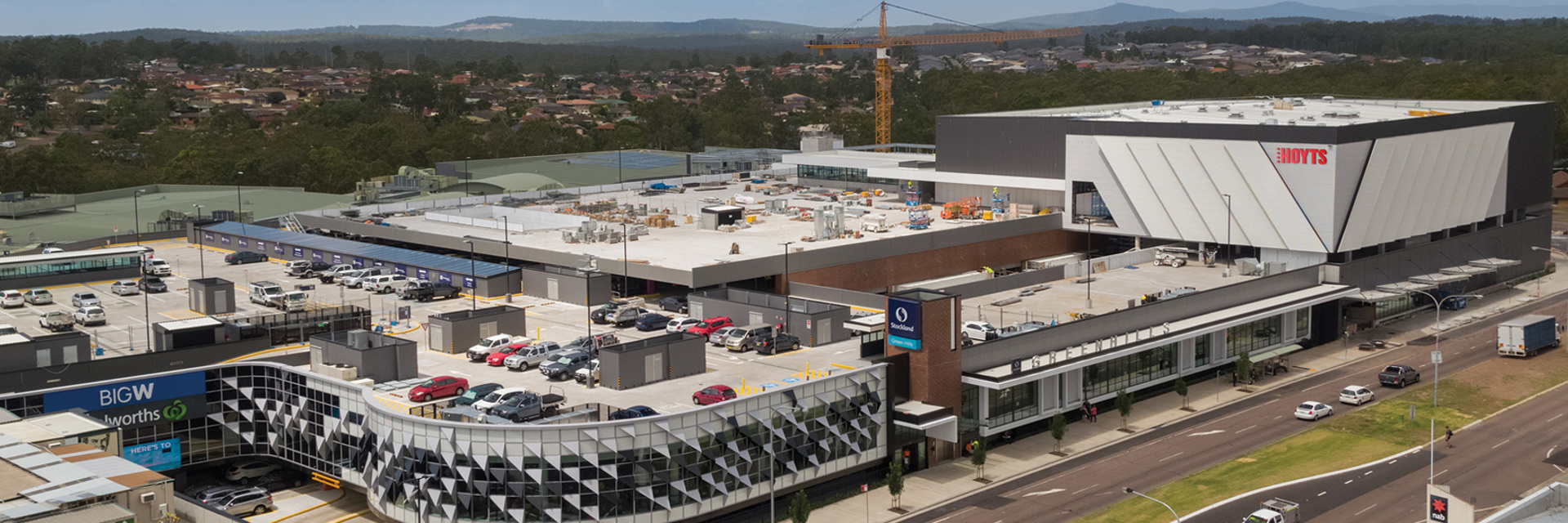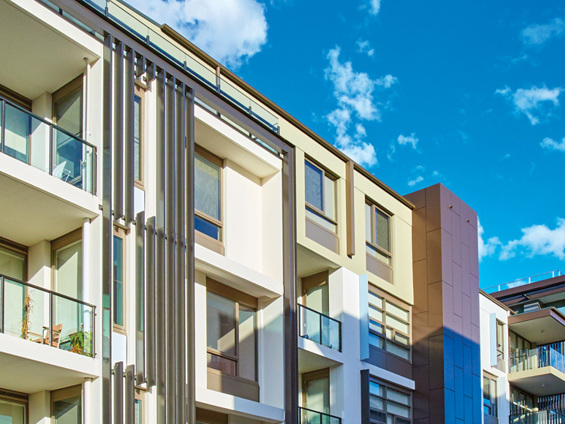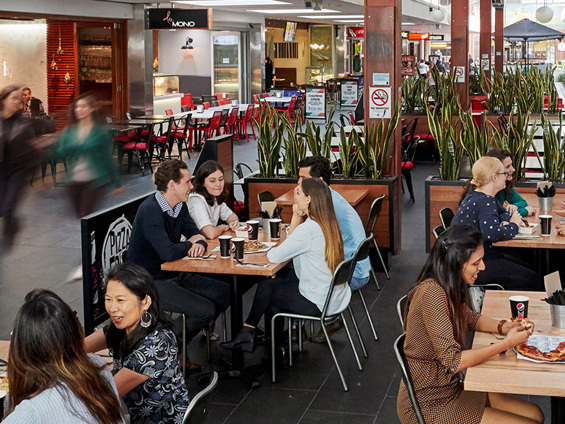Community creation delivers strong 1H18 results for Stockland
Financial results for the half year ended 31 December 2017
- Funds from operations (FFO) of $436 million, up 18.2% on 1H17
- FFO per security of 18.0 cents, up 16.9% on 1H17
- Adjusted funds from operations (AFFO) of $378 million, up 17.4% on 1H17
- AFFO per security of 15.6 cents, up 16.4% on 1H17
- Statutory profit of $684 million, down 2.6% on 1H17
- Return on equity (ROE) of 11.7%, up 0.7 percentage points on 1H17
- Net tangible assets (NTA) per security of $4.18, up 4.5% on 1H17
- Distribution per security (DPS) of 13.0 cents, up 3.2% from 1H17
Capital Management
- Gearing: 23.0%
- Weighted average debt maturity: 5.1 years, compared to 5.9 years at FY17
- Weighted average cost of debt: 5.3%, compared to 5.5% at FY17
- Credit rating: A-/stable (S&P), A3 (Moody’s)
- Suspension of Distribution Reinvestment Plan (DRP) for the December 2017 period
Commercial Property
- FFO: $302 million, comparable growth of 2.6%
- Retail FFO: $209 million, comparable growth of 2.7%
- Logistics and Business Parks FFO: $74 million, comparable growth of 4.6%
- Office FFO: $26 million, comparable growth down 2.8%
Retirement Living
- Operating profit: $18 million, down 29.7%
Residential
- Operating profit: $182 million, up 82.8%
- Operating profit margin: 20.9% compared with 14.1% for 1H17
Targets for FY18
- Reaffirming growth in FFO per security of 5 - 6.5%, assuming no material change in market conditions
- Reaffirming an estimated full year DPS of 26.5 cents, a 4% increase on FY17, assuming no material change in market conditions
Stockland Managing Director and CEO Mark Steinert today announced a positive performance for the Group for 1H18, with FFO up 18.2 per cent on the corresponding 1H17 period to $436 million, and an increase in FFO per security of 16.9 per cent on 1H17.
“We’ve delivered strong profit for the half year ended 31 December 2017, reflecting the benefits of our diversified business model. Our continued focus on community creation and leveraging our diverse sector capability is delivering some of the most liveable, affordable and connected communities in Australia and consistent, growing returns for our securityholders.
“Our strategy to broaden our customer reach, grow our asset returns, improve operational efficiency and maintain capital strength is driving sustainable profit growth,” Mr Steinert said.
Commercial Property
Stockland’s Commercial Property portfolio continued to deliver solid profit, and revaluations produced a net uplift of $124 million for the half year, including gains from several recently redeveloped assets.
Mr Steinert continued: “We delivered comparable FFO growth of 2.7 per cent and maintained high occupancy across our retail town centres in 1H18. We achieved positive growth in rents for both new leases, at +1.4 per cent, and renewals at +2.3 per cent. Following a flat start to the half, retail sales growth for the second quarter of 1H18 improved to 2 per cent.
“Our Retail strategy is focused on increasing services, lifestyle, health, dining and entertainment options to address customer demand and increase the resilience of our centres. We continue to see growth in lifestyle and entertainment tenancies, with comparable moving annual turnover (MAT) growth of 10 per cent in retail services and 2.8 per cent in casual dining and food catering over the half, reflecting the success of our remixing strategy.
“Following the sale of the Corrimal shopping centre, we continue to take a considered approach to non-core asset disposals and remain focused on introducing third party capital across our assets. This quarter we will place Stockland Highlands on the market and as announced in August 2017 we are aiming to divest $300 million of retail town centres over the next 12 to 18 months, of which approximately $70 million has been completed to date,” Mr Steinert said.
Stockland’s Logistics and Business Parks portfolio once again delivered strong results and a 99 per cent occupancy rate, with the Group on track to continue growing the business.
Mr Steinert continued: “The value of our Logistics and Business Parks business has risen around $600 million over the past four years, from $1.5 billion to $2.1 billion, and now represents 14 per cent of our total Group asset value. We achieved strong comparable FFO growth of 4.6 per cent for the half with positive leasing results and near-full occupancy.
“We have $176 million worth of projects under construction and an additional development pipeline of over $590 million, targeting 7 per cent FFO yields and centred on the eastern seaboard capital cities.”
Comparable FFO for the period was down 2.8 per cent across Stockland’s office portfolio, largely due to higher vacancies in Perth and ACT, however these assets are progressively being leased. Sydney assets, which represent the majority of the portfolio, performed well this period.
“We continue to assess development opportunities for our Sydney office assets, a number of which have higher and better use options, and will consider divestment opportunities for optimised assets.”
Retirement Living
The Retirement Living business continues to be supported by the fundamentals of an ageing population. However, sales at both existing villages and new developments over the half have been affected by the increased media attention on the sector, which has influenced customer confidence. Sales over the period were also affected by lower volumes of new development stock due to project timing. During the half we completed 28 development units, compared to 80 in the prior period, resulting in lower development volumes available for reservation.
Mr Steinert said: “The population of over 65s is growing at almost twice the rate of the rest of Australia and we expect market demand in this sector to continue to rise as the population ages. Our repositioning strategy and development pipeline reflects the changing preferences of retirees, and our new contract choices and product offerings will continue to broaden our customer reach.
“At our new developments we continue to see growth in the average price per retirement living unit, at 4.5 per cent for the period, which reflects the quality of our villages. Resident satisfaction levels consistently rate above 84 per cent, and in response to customer preferences we have an increased focus on health and wellbeing, and our services and facilities.”
Residential
“Over the last four years we have built a strong Residential business with significantly enhanced returns. We have made considerable progress reshaping the business, placing a greater focus on the deep Melbourne and Sydney markets with particular emphasis on transport and infrastructure corridors. As a result, our Residential business delivered another half of exceptionally strong returns and settlements, with operating profit growing over 80 per cent to $182 million in 1H18.
“We settled a record 3,210 lots, up 12.5 per cent on the corresponding period, and achieved a net operating profit margin of 20.9 per cent. FY18 profit will be skewed to the first half of the financial year due to a large proportion of higher-margin Sydney settlements.”
Stockland expects operating profit margins of around 17 per cent in FY18 and for the next 2 - 3 years, subject to market conditions.
“We have intentionally increased our weighting to Sydney and Melbourne housing, where the markets continue to be driven by structural undersupply. Around half our residential customers are first home buyers and over 75 per cent are owner-occupiers, which places us in a preferred position in the current residential lending and policy environment.
“More than 95 per cent of our residential business earnings over FY18 - FY20 will be generated by our masterplanned communities, and we continue to progress our disciplined re-entry into the apartment market,” Mr Steinert said.
Group Financial
Chief Financial Officer Tiernan O’Rourke highlighted the Group’s strong balance sheet and positive cash generation over the 1H18 period.
“Over the half, we’ve sustained disciplined capital management and strong underlying operating cash flows. Our gearing has risen slightly to 23.0 per cent, at the lower end of our 20 - 30 per cent target range.
“We’ve continued to actively manage our debt program, which has seen us improve our weighted average cost of debt (WACD) over the period, to 5.3 per cent, from 5.5 per cent in FY17. With the raising of USD 215 million of debt in January 2018 in the USPP market, we have extended our proforma weighted average debt maturity to 5.7 years compared with 5.1 years recorded at 31 December 2017.
“Our A/-stable credit rating from Standard and Poor’s and A3 credit rating from Moody’s demonstrates the strength of our balance sheet and provides access to a broader range of debt markets, positioning the business well for future growth,” Mr O’Rourke said.
As announced today, Stockland has suspended its DRP for the December 2017 period.
Sustainability
In 2017, Stockland was recognised as a global leader in sustainability, including being the only Australian company to be included on the 2017 Climate A list released by CDP*, in addition to recognition from GRESB** and the World Dow Jones Sustainability Index.
Mr Steinert continued: “I’m extremely proud of our commitment to excellence in sustainability. This year we commence the rollout of our $23.5 million solar initiative across 10 of our shopping centres, which will help create clean energy for our retailers, customers and communities. We also continue to invest in technology and innovation, which is critical to maintaining a competitive cost structure, and responding to global trends and the changing preferences of our customers.”
Outlook
Mr Steinert said: “Our results continue to be driven by our integrated approach to community creation, active asset management, and disciplined approach to capital allocation and management.
“We expect economic conditions to remain relatively favourable with positive employment growth and historically low interest rates. Population growth and associated infrastructure investment are key drivers of all our businesses and with a strong balance sheet, good earnings visibility and robust, growing pipelines, Stockland is well placed to respond to Australia’s needs over the next decade.
“We continue to focus on strategically repositioning our assets and enhancing customer experience, while taking a disciplined approach to acquisitions. Liveability and housing affordability remain challenges for many Australians, so broadening our customer reach through diversity of product and choice will continue to drive growth,” Mr Steinert said.
Stockland expects its Commercial Property business to maintain moderate growth in returns, with comparable FFO growth of 2 - 3 per cent.
In line with guidance, approximately 6,500 residential settlements are expected for FY18. Residential operating profit margins are forecast at around 17 per cent for the full year with a skew to the first half, and are expected to remain at this level for the next 2 - 3 years, subject to market conditions.
We expect 1H18 Retirement Living market conditions to continue into 2H18.
“Assuming no material change in market conditions, we remain on track to achieve our target growth in FFO per security of 5.0 - 6.5 per cent for the full year and a full year distribution of 26.5 cents per security, representing growth of 4 per cent,” Mr Steinert concluded.
Stockland’s 1H18 results presentation will be webcast via www.stockland.com.au on Wednesday 21 February at 11:30am (AEDT).
*CDP is the Climate Disclosure Panel, a not-for-profit organisation that runs the global disclosure system for investors, companies, cities, states and regions to manage their environmental impacts.
**GRESB is the Global Real Estate Sustainability Benchmark.


